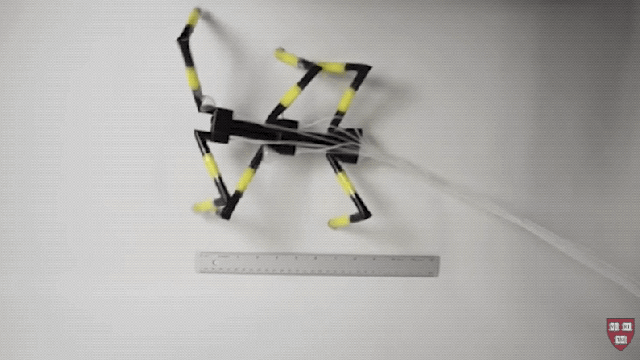Emulating spiders and bugs, and using drinking straws as basic building blocks, a research team from Harvard University has developed a type of semi-soft robot capable of standing, walking and even striding across a liquid surface. Say hello to the “arthrobots”.
In an effort to create nimbler and more agile robots, Harvard’s George White and Alex Nemiroski decided to make machines that move like arachnids and insects. These creatures are among the most agile on the planet, able to move rapidly, climb on various objects, and perform physical manoeuvres that clunky conventional robots simply cannot. When it came construction materials, however, the researchers looked to something far less natural: The humble drinking straw.
“This all started with an observation that George made, that polypropylene tubes have an excellent strength-to-weight ratio. That opened the door to creating something that has more structural support than purely soft robots have,” said Nemiroski, a former postdoctoral fellow in Whitesides’ Harvard lab, in a statement. “That was the building block, and then we took inspiration from arthropods to figure out how to make a joint and how to use the tubes as an exoskeleton. From there it was a question of how far can your imagination go? Once you have a LEGO brick, what kind of castle can you build with it?”
To create the joints, the researchers cut notches into thick Slurpee straws, allowing them to bend. A short length of rubber tubing was then inserted inside the straws and, when inflated, this tubing forced the joints to extend. A rubber tendon was also attached to each side, allowing the joint to retract when the tubing was deflated. The details of this work can now be found in the journal Soft Robotics.
Using with this deceptively simple concept, White and Nemiroski created a basic one-legged robot capable of crawling. Finding success, they graduated to two- and three-legged versions until they finally hit a wall at an eight-legged robo-beastie.
Initially, the researchers used a simple hand-controlled syringe to pump air into the joints, but as the designs got more complicated, they had to rely on computers to control the rate of inflation and the sequencing of the limbs. Moving beyond this point would have required new materials and a different paradigm for controlling the leg movements.
Eventually, more refined versions of these robots could be used in surveillance, or during search operations following natural disasters. The arthrobots may not be the most durable machines, but they’re cheap, effective, and easy to build. More to the point, they’re wonderfully uncomplicated.
